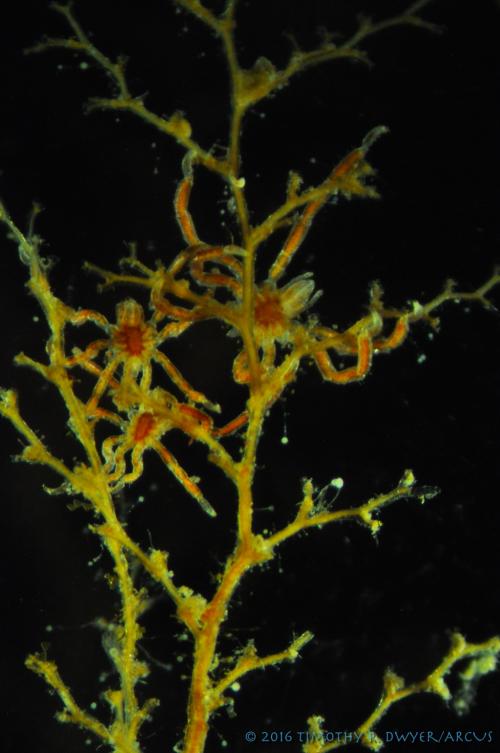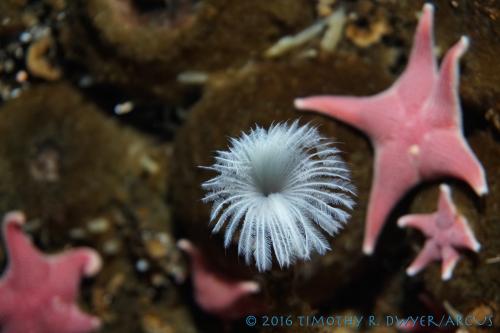 Viewed under a dissecting microscope climbing on their hydroid prey, temperate water pycnogonids from Friday Harbor, Washington, reach a maximum size of only a few millimeters.
Viewed under a dissecting microscope climbing on their hydroid prey, temperate water pycnogonids from Friday Harbor, Washington, reach a maximum size of only a few millimeters.
Colossal size in sea spiders is relative, of course. In the polar regions, the largest sea spiders ever reported had leg spans of 30in/75cm. The largest spiders that the team has seen during this season and last year's expedition are 10in/25cm. However, when compared to other pycnogonids throughout the group's geographic distribution - which includes much of world's oceans - some of the 200 or so species of Antarctic sea spiders are HUGE. For these reasons, pycnogonids are an ideal taxon for studying occurrences of extremely large body size in cold-water environments, a phenomenon known as "polar gigantism."
 Antarctic polychaete worms can reach unusual large sizes.
Antarctic polychaete worms can reach unusual large sizes.
Polar gigantism is not seen only in sea spiders. Numerous other groups of invertebrate animals have individual species that achieve large body size in polar regions. Certain species of sea stars can reach sizes approaching 3ft/1m. Marine isopods, relatives of terrestrial pill bugs, can achieve lengths of 6in/15cm. Polychaete worms 30in/75cm long have been observed. The maximum size for one species of Antarctic glass sponge is 6ft/2m tall and 5ft/1.5m wide. Polar gigantism is also conspicuously absent in other groups of invertebrates, most notably shell forming animals like clams, scallops, and snails. So why might they be giants? That's what the team of researchers from the University of Hawaii and the University of Montana has traveled all the way to Antarctica to answer.
 A diver swims among giant glass sponges (from Moran, A. and H. A. Woods, 2014. Why might they be giants? Towards an understanding of polar gigantism. Journal of Experimental Biology, vol. 215, pgs 1995-2002).
A diver swims among giant glass sponges (from Moran, A. and H. A. Woods, 2014. Why might they be giants? Towards an understanding of polar gigantism. Journal of Experimental Biology, vol. 215, pgs 1995-2002).
